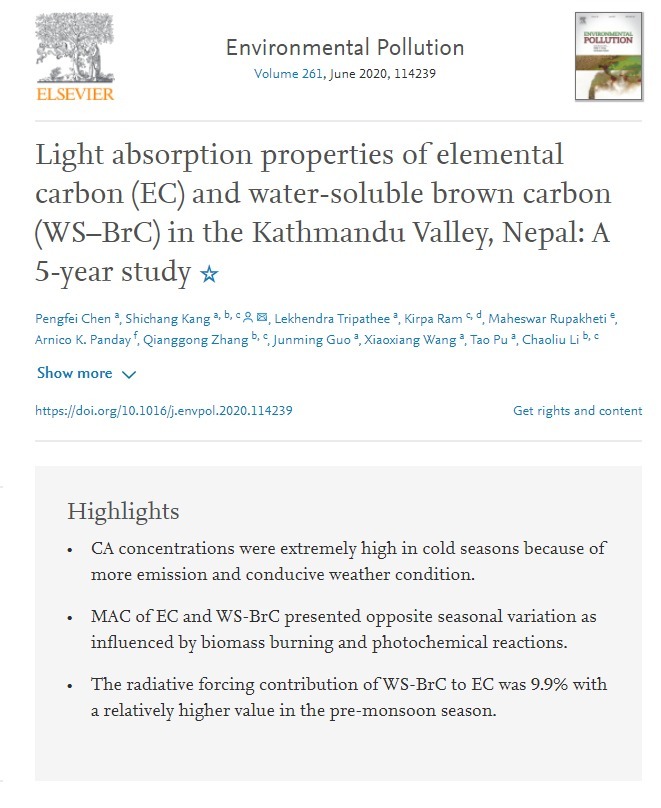
This study presents a comprehensive analysis of organic carbon (OC), elemental carbon (EC), and particularly the light absorption characteristics of EC and water-soluble brown carbon (WS–BrC) in total suspended particles in the Kathmandu Valley from April 2013 to January 2018. The mean OC, EC, and water-soluble organic carbon (WSOC) concentrations were 34.8 ± 27.1, 9.9 ± 5.8, and 17.4 ± 12.5 μg m−3, respectively. A clear seasonal variation was observed for all carbonaceous components with higher concentrations occurring during colder months and lower concentrations in the monsoon season. The relatively low OC/EC ratio (3.6 ± 2.0) indicates fossil fuel combustion as the primary source of carbonaceous components. The optical attenuation (ATN) at 632 nm was significantly connected with EC loading (ECS) below 15 μg cm−2 but ceased as ECS increased, reflecting the increased influence of the shadowing effect. The derived average mass absorption cross-section of EC (MACEC) (7.0 ± 4.2 m2 g−1) is comparable to that of freshly emitted EC particles, further attesting that EC was mainly produced from local sources with minimal atmospheric aging processes. Relatively intensive coating with organic aerosols and/or salts (e.g., sulfate, nitrate) was probably the reason for the slightly higher MACEC during the monsoon season, whereas increased biomass burning was a major factor leading to lower MACEC in other seasons. The average MACWS-BrC at 365 nm was 1.4 ± 0.3 m2 g−1 with minimal seasonal variations. In contrast to MACEC, biomass burning was the main reason for a higher MACWS-BrC in the non-monsoon season. The relative light absorption contribution of WS-BrC to EC was 9.9% over the 300–700 nm wavelength range, with a slightly higher ratio (13.6%) in the pre-monsoon season. Therefore, both EC and WS-BrC should be considered in the study of optical properties and radiative forcing of carbonaceous aerosols in this region. © 2020 Elsevier Ltd